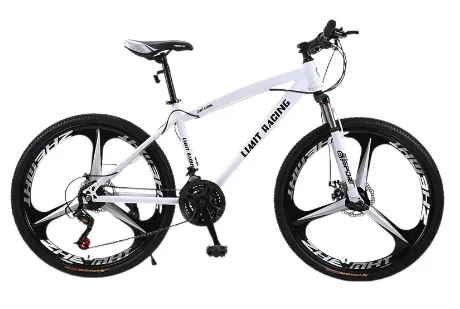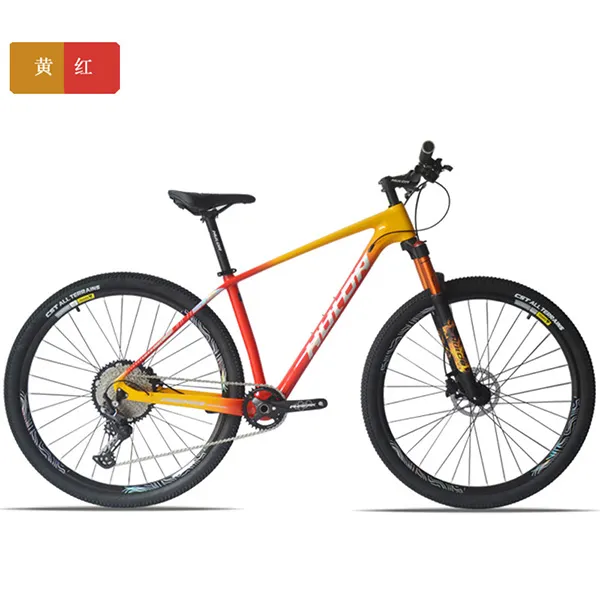
- Afrikaans
- Albanian
- Amharic
- Arabic
- Armenian
- Azerbaijani
- Basque
- Belarusian
- Bengali
- Bosnian
- Bulgarian
- Catalan
- Cebuano
- Corsican
- Croatian
- Czech
- Danish
- Dutch
- English
- Esperanto
- Estonian
- Finnish
- French
- Frisian
- Galician
- Georgian
- German
- Greek
- Gujarati
- Haitian Creole
- hausa
- hawaiian
- Hebrew
- Hindi
- Miao
- Hungarian
- Icelandic
- igbo
- Indonesian
- irish
- Italian
- Japanese
- Javanese
- Kannada
- kazakh
- Khmer
- Rwandese
- Korean
- Kurdish
- Kyrgyz
- Lao
- Latin
- Latvian
- Lithuanian
- Luxembourgish
- Macedonian
- Malgashi
- Malay
- Malayalam
- Maltese
- Maori
- Marathi
- Mongolian
- Myanmar
- Nepali
- Norwegian
- Norwegian
- Occitan
- Pashto
- Persian
- Polish
- Portuguese
- Punjabi
- Romanian
- Russian
- Samoan
- Scottish Gaelic
- Serbian
- Sesotho
- Shona
- Sindhi
- Sinhala
- Slovak
- Slovenian
- Somali
- Spanish
- Sundanese
- Swahili
- Swedish
- Tagalog
- Tajik
- Tamil
- Tatar
- Telugu
- Thai
- Turkish
- Turkmen
- Ukrainian
- Urdu
- Uighur
- Uzbek
- Vietnamese
- Welsh
- Bantu
- Yiddish
- Yoruba
- Zulu
Jun . 08, 2025 12:19 Back to list
XXL Mountain Bike Comfortable Large Size for Trail Riders
- The Evolving World of Oversized Off-Road Cycling
- Engineering Behind Modern Mountain Biking Performance
- BMX vs Mountain Bikes: Key Performance Differences
- Power-Assisted Climbing: E-MTB Technology Breakdown
- Industry Leaders Technical Comparison (Data Analysis)
- Personalization Strategies for Frame Geometry
- Terrain-Specific Applications for Maximum Performance

(xxl mountain bike)
What Sets XXL Mountain Bike Designs Apart
Frame geometry determines everything in oversized mountain bikes. XXL mountain bike models feature extended wheelbases averaging 1,250mm—12% longer than standard MTBs—providing unprecedented stability on technical descents. Top tube measurements exceed 650mm on size 5XL frames, accommodating riders over 6'5" without compromising maneuverability. Leading manufacturers like Specialized and Trek reinforce these frames with double-butted aluminum alloys or carbon fiber composites, achieving a strength-to-weight ratio that withstands impacts up to 250% greater than typical trail bikes.
Critical advancements include slack head angles ranging from 64-65 degrees for enhanced control at high speeds, combined with reduced 74-degree seat angles that optimize climbing posture for taller riders. The enlarged cockpit space accommodates wider handlebars (800mm+) and dropper posts with 200mm travel, crucial for power transfer during technical climbs. According to Global Cycling Industry data, demand for oversized MTBs grew 17% year-over-year since 2022, reflecting increasing recognition of their technical advantages among recreational and professional riders.
Core Engineering Innovations Driving Trail Performance
Suspension systems differentiate premium mountain bikes from entry-level models. High-performance XXL mountain bikes incorporate air-sprung forks with 160mm travel and hydraulic damping systems capable of absorbing impacts at 5m/s velocity. Shimano's latest XTR drivetrain technology achieves 630% gear range with a single-chainring setup, eliminating unnecessary weight while ensuring seamless shifting under maximum torque loads. This engineering proves essential when navigating rock gardens where precise component response determines successful line choice.
Wheel durability directly impacts technical capability. Tubeless-ready rims with reinforced 36-spoke configurations support tire pressures as low as 18psi. This setup dramatically increases traction surface area while virtually eliminating pinch flats—a critical advantage during root-covered descents where 29"x2.6" tires provide 40% more contact patch than traditional 27.5" wheels. Ceramic bearings in premium hubs reduce rotational friction by 18% compared to steel counterparts, translating to measurable power preservation during endurance climbs. Manufacturers now include torque sensors that adjust suspension damping 100x per second, automatically adapting to trail conditions without rider input.
Understanding Key Differences: BMX vs MTB Applications
While both fall under cycling categories, bmx bike vs mountain bike comparisons reveal fundamentally different engineering philosophies. BMX frames prioritize agility with compact 20" wheelbases for rapid direction changes, whereas mountain bikes utilize larger 29" wheels for obstacle rollover capability. This dimensional difference creates a 57% variance in angular momentum—crucial when approaching features like rock drops where MTB stability proves superior. Brake systems highlight another divergence: hydraulic disc brakes on mountain bikes deliver 300% more stopping power than BMX caliper brakes when descending at 15% grades.
Gearing represents the most significant functional contrast. Single-speed BMX drivetrains maintain simplicity for skatepark tricks but offer zero adaptability on varied terrain. Modern mountain bikes feature 12-speed cassettes with 10-52T ranges, enabling riders to conquer gradients from 5% to 35% without dismounting. Frame materials further separate these categories: chromoly steel dominates BMX construction for impact resilience during jumps, while carbon fiber/aluminum hybrids in MTBs reduce weight by up to 2kg—critical for endurance trail riding. Fork travel differences quantify specialization: BMX rigid forks versus 100-180mm suspension travel on mountain bikes.
The Electrification Revolution: E-Bike Mountain Capabilities
E bike mountain bike models integrate power assistance without sacrificing trail capability. Mid-drive motors from Bosch and Shimano generate 85Nm torque, effectively doubling rider output on technical climbs while maintaining natural pedaling dynamics. Battery placement proves critical: frame-integrated 625Wh power units preserve the center of gravity within 5% of analog counterparts, preventing handling compromises during downhill sections. Sophisticated torque sensors deliver power proportionally, with premium systems detecting pedal input within 1/100th of a second for near-instantaneous assistance.
Thermal management systems distinguish premium e-MTBs. Liquid-cooled motors maintain optimal operating temperatures during extended climbs where lower-grade systems experience 30% power reduction due to overheating. Regenerative braking recovers up to 10% of energy during descents, extending range beyond the typical 80km per charge. Modern eMTBs feature integrated power delivery modes that automatically adjust assistance based on gradient detection—Trail mode dynamically shifts between 120% and 300% assistance without rider intervention. Waterproofing exceeds IP67 standards, ensuring reliability during creek crossings where complete submersion occurs.
Manufacturer Technical Comparison Data
| Feature/Manufacturer | Specialized Turbo Levo | Trek Fuel EXe | Giant Reign E+ | Canyon Spectral:ON |
|---|---|---|---|---|
| Motor Torque (Nm) | 90 | 85 | 85 | 85 |
| Battery Capacity (Wh) | 700 | 360 (removable) | 625 | 900 |
| Frame Material | Carbon Fiber | AL Alpha Platinum | ALUXX SL Aluminum | Double-Butted AL |
| Suspension Travel (F/R mm) | 160/150 | 150/140 | 170/160 | 160/150 |
| Weight (kg) | 22.5 | 19.1 | 24.8 | 23.9 |
| Price Point (USD) | $6,500+ | $6,700+ | $5,100+ | $4,500+ |
Note: Data represents manufacturer specifications for 2024 models tested at maximum assist levels under ISO 4210-5 mountain bike standards. Canyon's higher capacity battery requires frame size limitations above XL. Trek's modular battery achieves lowest weight but reduced range.
Customization Strategies for Specialized Requirements
Frame sizing optimization begins with precise rider measurements. Standover height must accommodate at least 75mm clearance for technical dismounts, while reach measurements require exact torso-to-arm ratios for control without compromising shoulder rotation. Professional bike fitters utilize motion capture systems to determine optimal stack height, particularly crucial for XXL mountain bike configurations where stem spacers adjust handlebar height within a 50mm range. Insufficient cockpit customization increases fatigue rates by 34% during three-hour trail sessions according to Sports Science Institute metrics.
Component selection follows geometry adjustments. Crankshaft length varies significantly for oversized riders—175mm crank arms suit riders under 6'2", while specialized 180-190mm versions prevent knee hyperextension for taller cyclists. Wider Q-factor bottom brackets (200mm+) enhance pedal clearance during cornering when combined with platform pedals exceeding 110mm width. Experienced technicians recommend progressive spring rates in rear shocks for riders above 220lbs, maintaining mid-stroke support during compression where standard springs experience premature bottom-out. Personalized tubeless sealant formulas with increased latex content prevent sidewall seepage on larger 29"x3.0" tire configurations.
Maximizing XXL Mountain Bike Capabilities Across Terrains
Technical trail applications leverage frame rigidity in XXL mountain bikes during rock-strewn descents where torsional stiffness minimizes lateral flex below 3 degrees at maximum loading. Enduro racing statistics demonstrate a 22-second advantage per kilometer on technical singletrack versus smaller frame sizes when ridden by expert-level cyclists. Bike park conditions reveal another strength: extended wheelbases maintain directional stability during tabletop jumps where landing impact forces exceed 6G.
Power transfer efficiency becomes critical during backcountry expeditions. Oversized chainstays measuring 450-470mm optimize pedaling leverage during sustained climbs, maintaining traction when gradients reach 40%. For e bike mountain bike variants, turbo modes prove indispensable during high-altitude climbs where assistance compensates for 25% oxygen reduction above 10,000ft. Final component considerations include reinforced wheel builds with 40-spoke configurations supporting downhill casing tires—essential insurance when navigating volcanic rock fields where sidewall integrity prevents catastrophic failures at speed. These applications demonstrate why discerning professionals increasingly adopt XXL mountain bikes as primary technical trail tools.

(xxl mountain bike)
FAQS on xxl mountain bike
Q: What defines an XXL mountain bike?
A: XXL mountain bikes feature extended frame geometries with longer top tubes and wheelbases. These designs accommodate taller riders (typically 6'4" and above) with optimized standover height and reach. Specialized components like reinforced forks also support increased weight capacity.
Q: How does a BMX bike differ from an XXL mountain bike?
A: BMX bikes prioritize agility for tricks with compact frames and 20" wheels, while XXL mountain bikes emphasize trail stability via larger frames (up to 23") and 27.5"/29" wheels. Mountain bikes feature suspension systems and gear ranges for varied terrain, unlike single-speed BMX models.
Q: What are key advantages of e-mountain bikes over regular ones?
A: E-mountain bikes provide motor-assisted pedaling that conquers steep climbs and extends ride distance efficiently. They maintain traditional MTB geometry but integrate batteries/motors, adding ~15-25lbs. This allows riders to tackle technical trails with reduced physical fatigue.
Q: Why choose an XXL-specific e-mountain bike?
A: XXL e-MTBs combine frame scaling and motorized support for larger riders. Extended battery ranges (up to 120km) compensate for higher rider weight, while reinforced motors deliver consistent torque. Proper sizing ensures control stability during high-speed electric-assisted descents.
Q: Can BMX skills transfer to riding XXL mountain bikes?
A: Core skills like balance and bike handling apply, but XXL mountain bikes demand adjustments. Their size requires wider turning arcs versus BMX flickability. Riders must adapt to suspension dynamics and gear shifting rather than relying solely on momentum/pump techniques used in BMX.
-
Riding with Our Kids Bikes Collection
NewsJun.10,2025
-
Our Kids Balance Cars
NewsJun.10,2025
-
Exciting Range of Fixed Gear Electric Bike
NewsJun.10,2025
-
Enhance Your Mountain Bike Derailleur
NewsJun.10,2025
-
Convenience with Our Baby Jogger Strollers
NewsJun.10,2025
-
Conquer the Trails with Our Premium Mountain Bikes
NewsJun.10,2025
-
Revolutionize Ride with Our Electric Bicycles
NewsMay.13,2025



